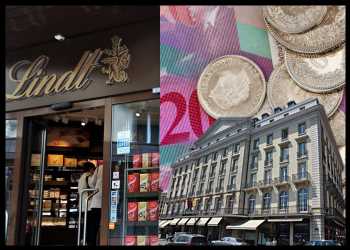Swiss Economy Stagnates In Q4
Despite the moderate growth in consumer spending, Switzerland’s economy stagnated at the end of 2022 as the challenging global conditions curtailed exports and manufacturing output.
Gross domestic product logged a flat sequential growth in the fourth quarter after expanding 0.2 percent in the previous three months, the State Secretariat for Economic Affairs, or SECO, said Tuesday.
Year-on-year economic growth eased to 0.7 percent from 0.9 percent in the third quarter.
The expenditure-side of GDP showed that domestic final demand grew 0.5 percent, maintaining the momentum of the previous quarter.
Equipment and software investment climbed 1.7 percent as supply bottlenecks eased in the fourth quarter. By contrast, construction investment fell 0.5 percent, in line with the decline in value added in the construction sector.
Private consumption and government spending gained 0.3 percent each. Consumer spending on services continued to increase, while the development of retail sales was muted.
Shipments of goods slid 1.7 percent, while exports of services climbed 0.8 percent. At the same time, imports of goods and services fell 1.5 percent and 0.6 percent, respectively.
Provisional results for the whole year showed that the Swiss economic growth eased to 2.1 percent in 2022 from 3.9 percent in 2021. The unadjusted GDP growth also came in at 2.1 percent, slower than the 4.2 percent in the previous year.
The recovery from the pandemic boosted activity in the alpine economy during 2022, but the tense energy situation in Europe and the subdued global environment weighed on overall growth.
The Swiss National Bank has forecast the economy to grow 2.4 percent this year before slowing to 1.8 percent in 2024.
At the quarterly monetary policy meeting in December, the SNB had raised its policy rate by 0.5 percentage points to 1.00 percent to ensure price stability.
The central bank has not ruled out further tightening in the policy rate as policymakers try to counter rising inflationary pressures and the spread of inflation.
Elsewhere, the Swiss KOF economic barometer signaled an improvement in the economic outlook, primarily driven by the manufacturing sector in February.
The economic barometer rose more-than-expected to hit its long-run average of 100.0 in February from 97.4 in January. The expected reading was 98.0.
Source: Read Full Article


